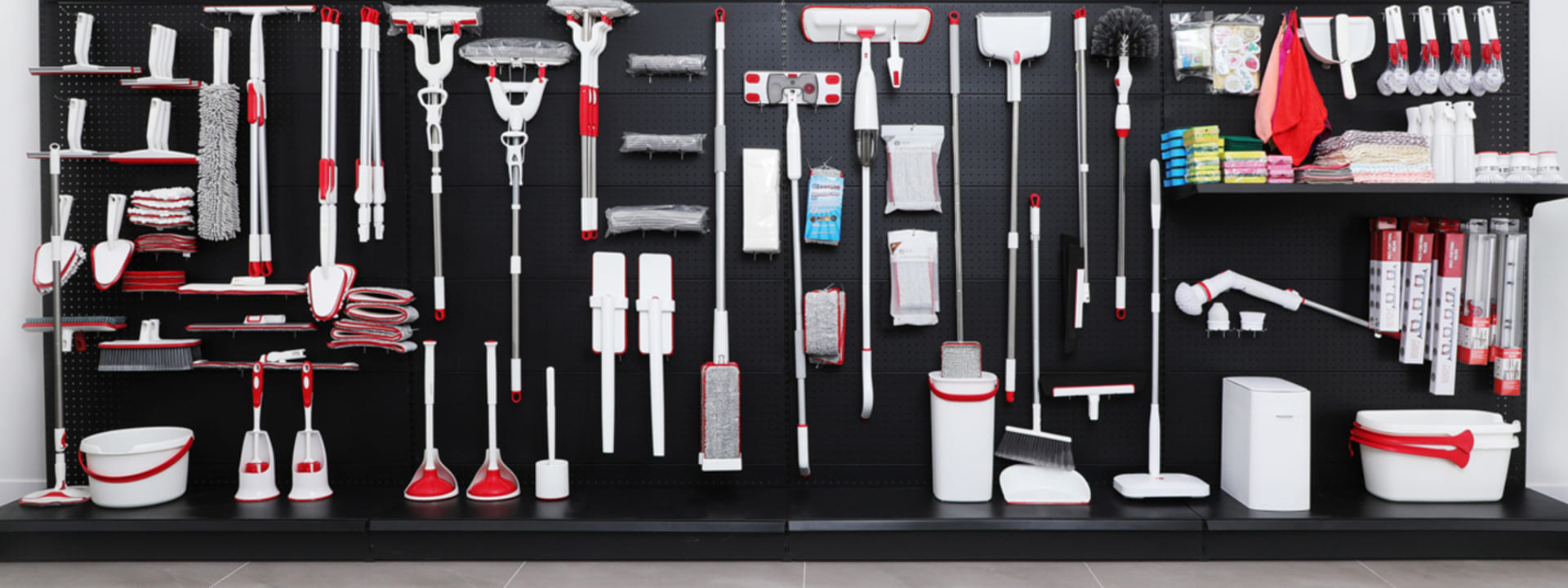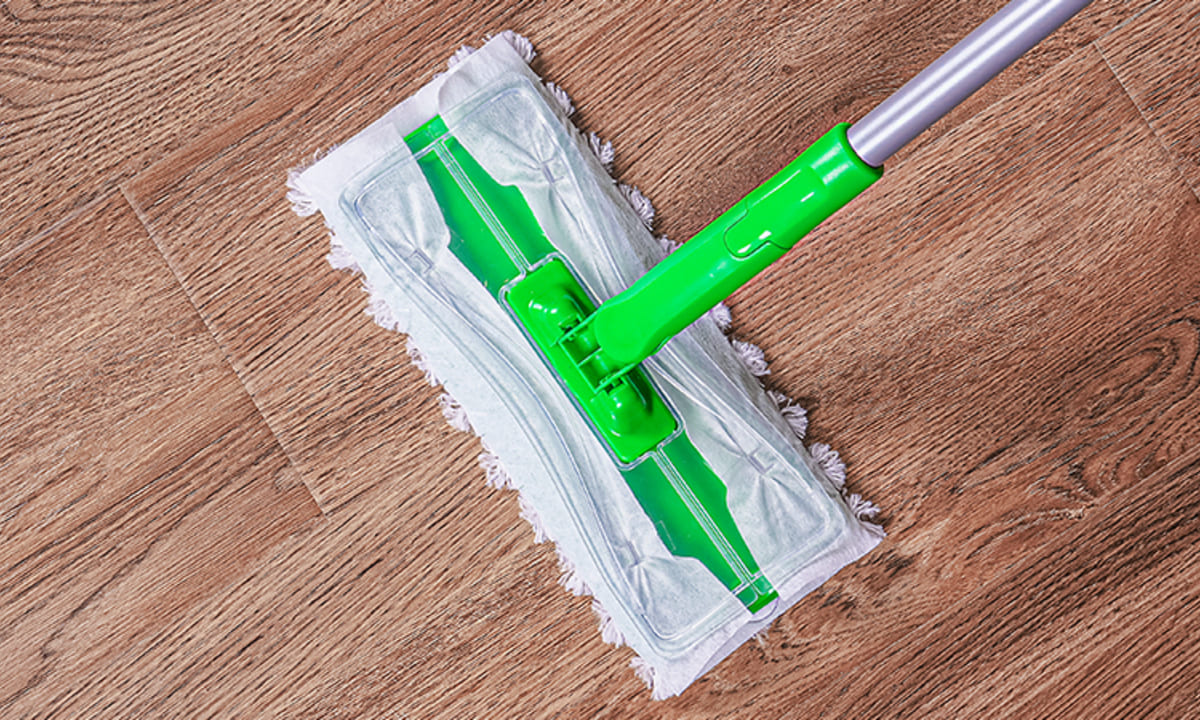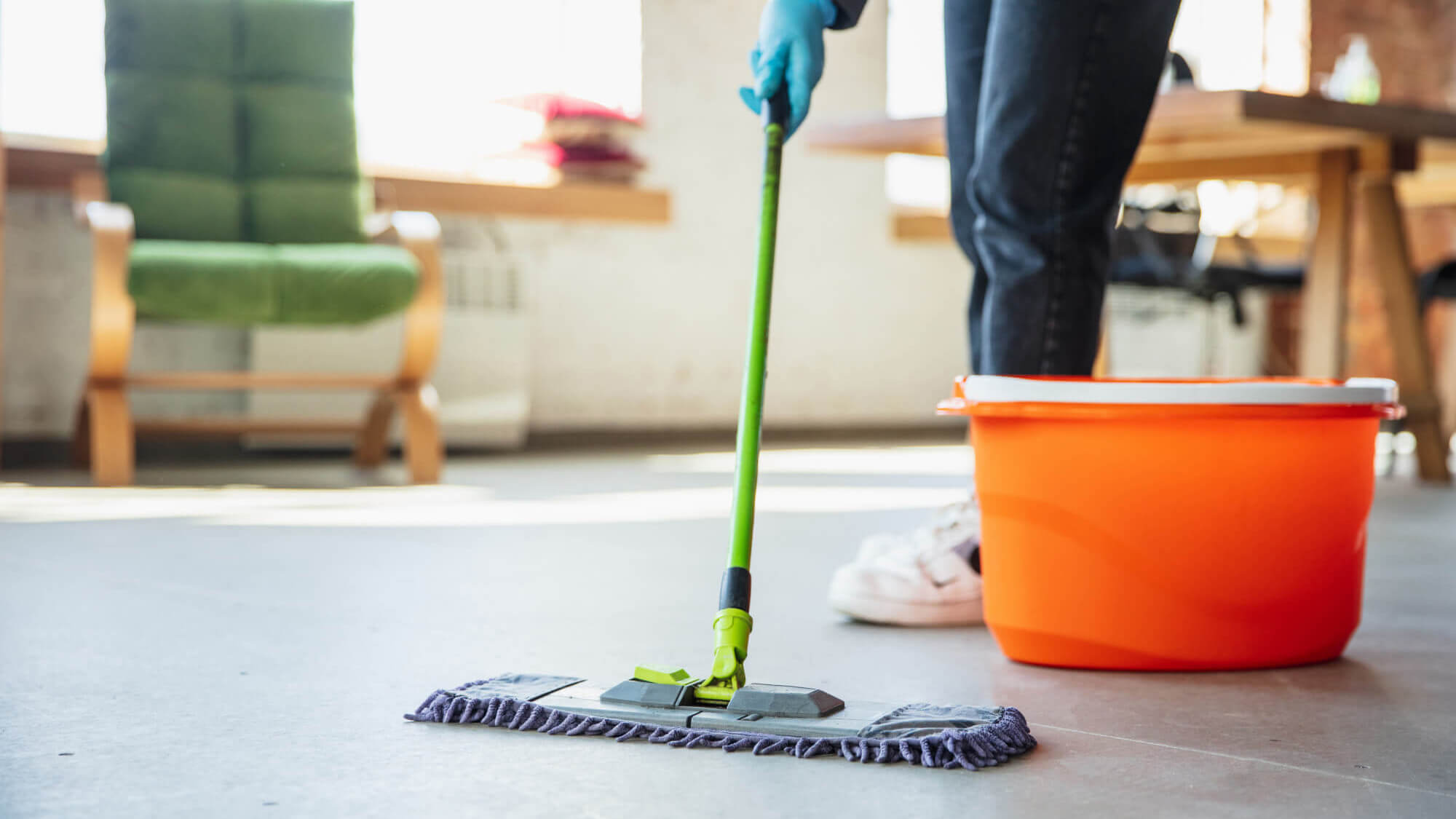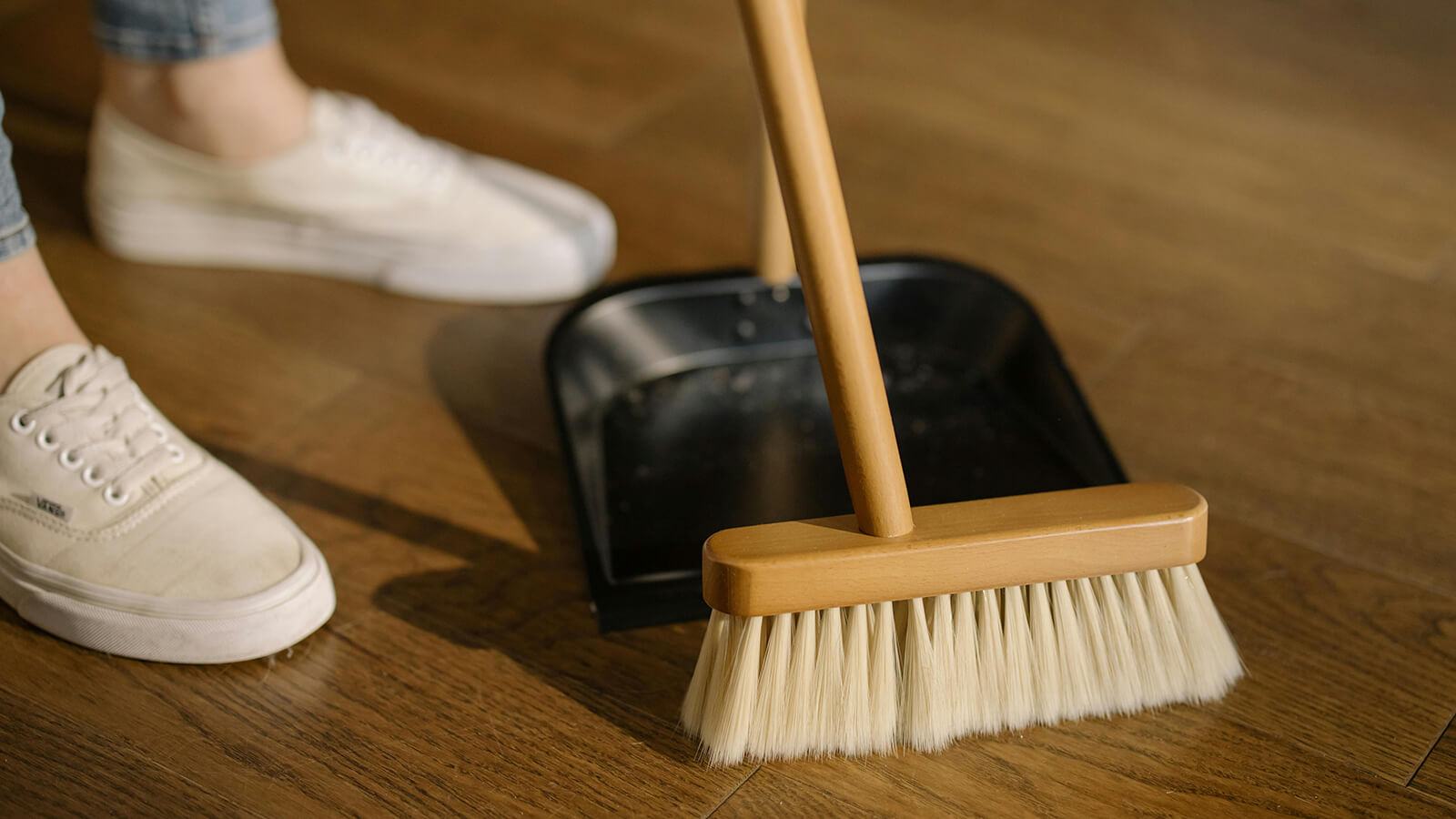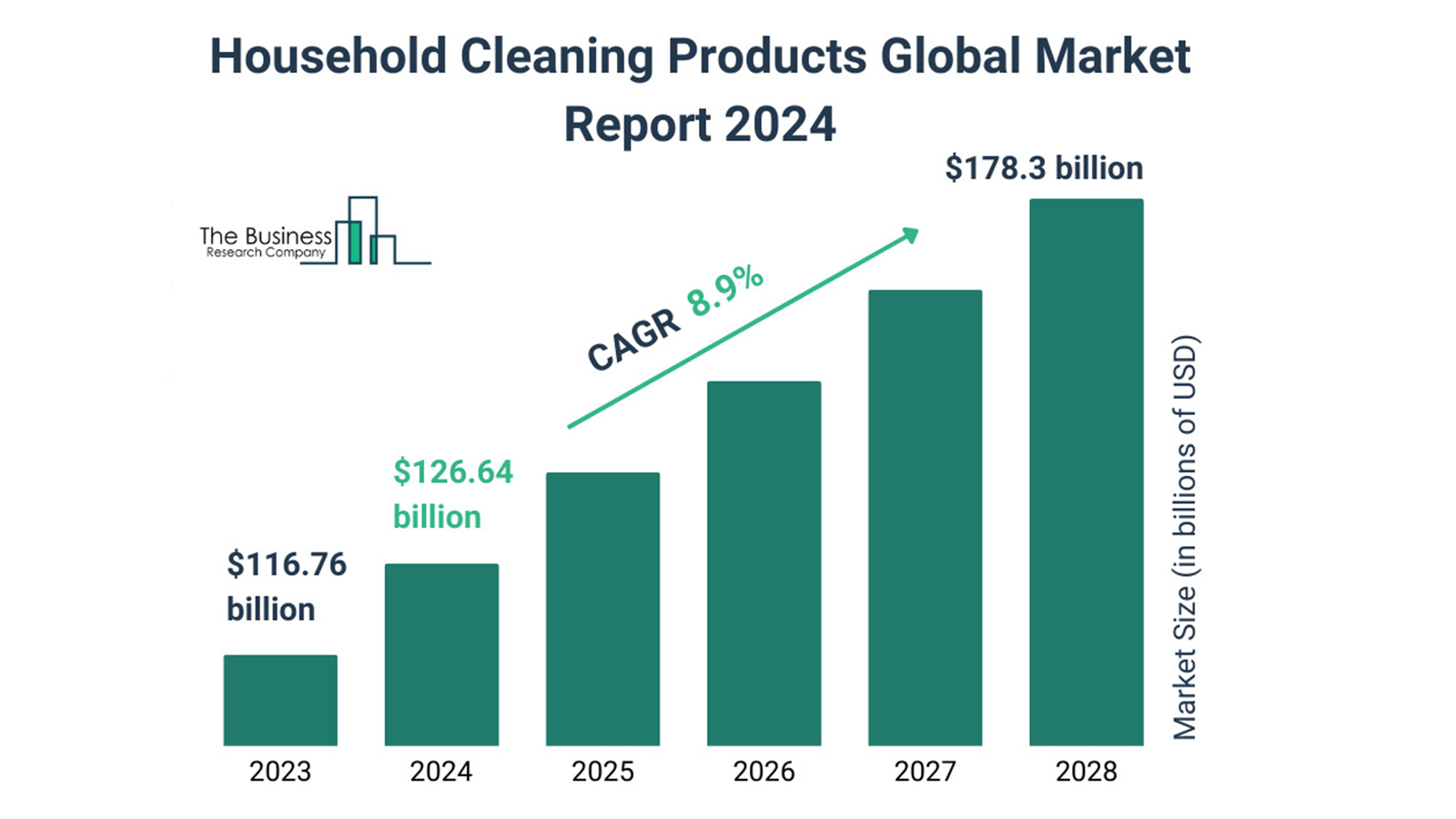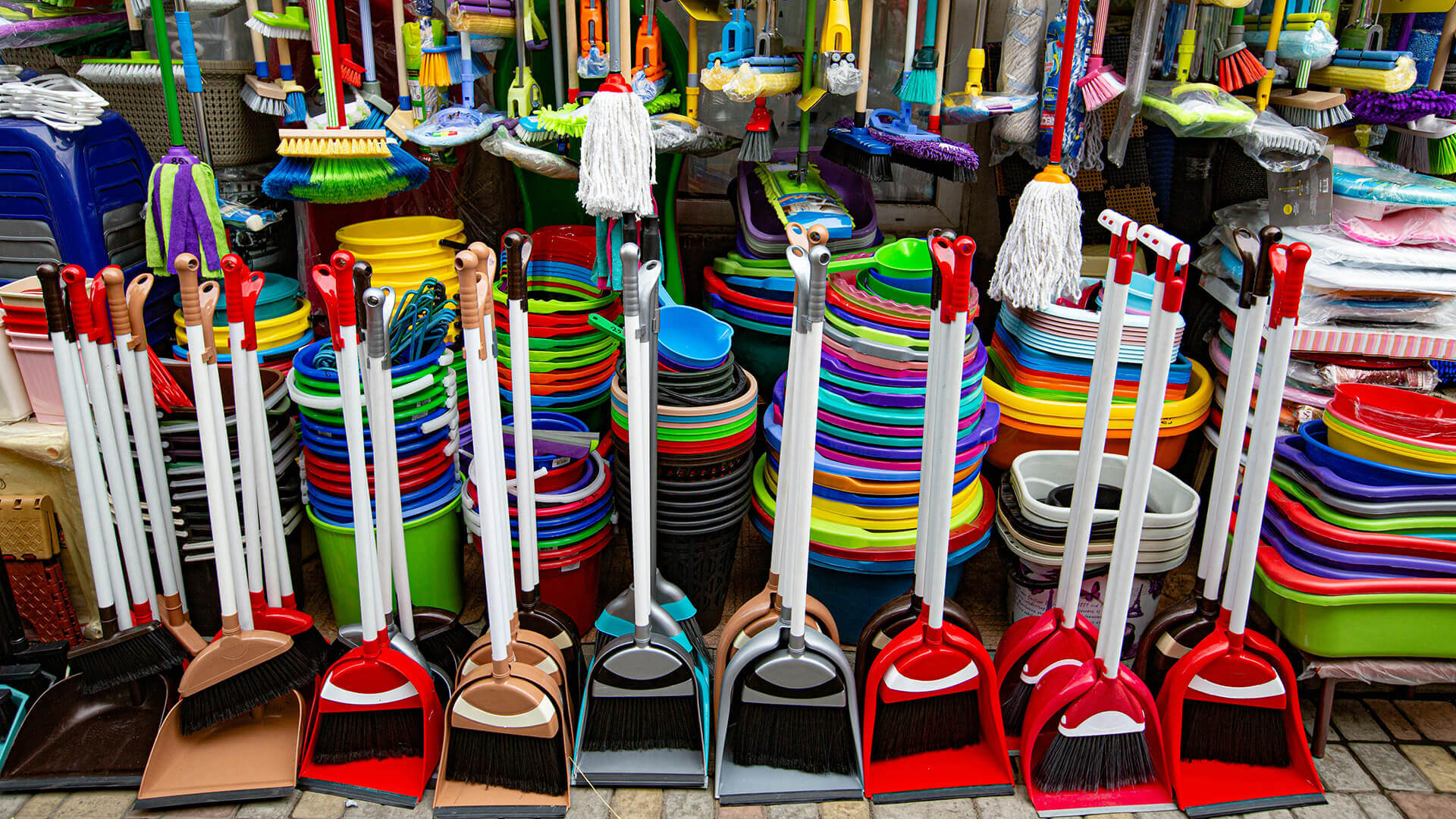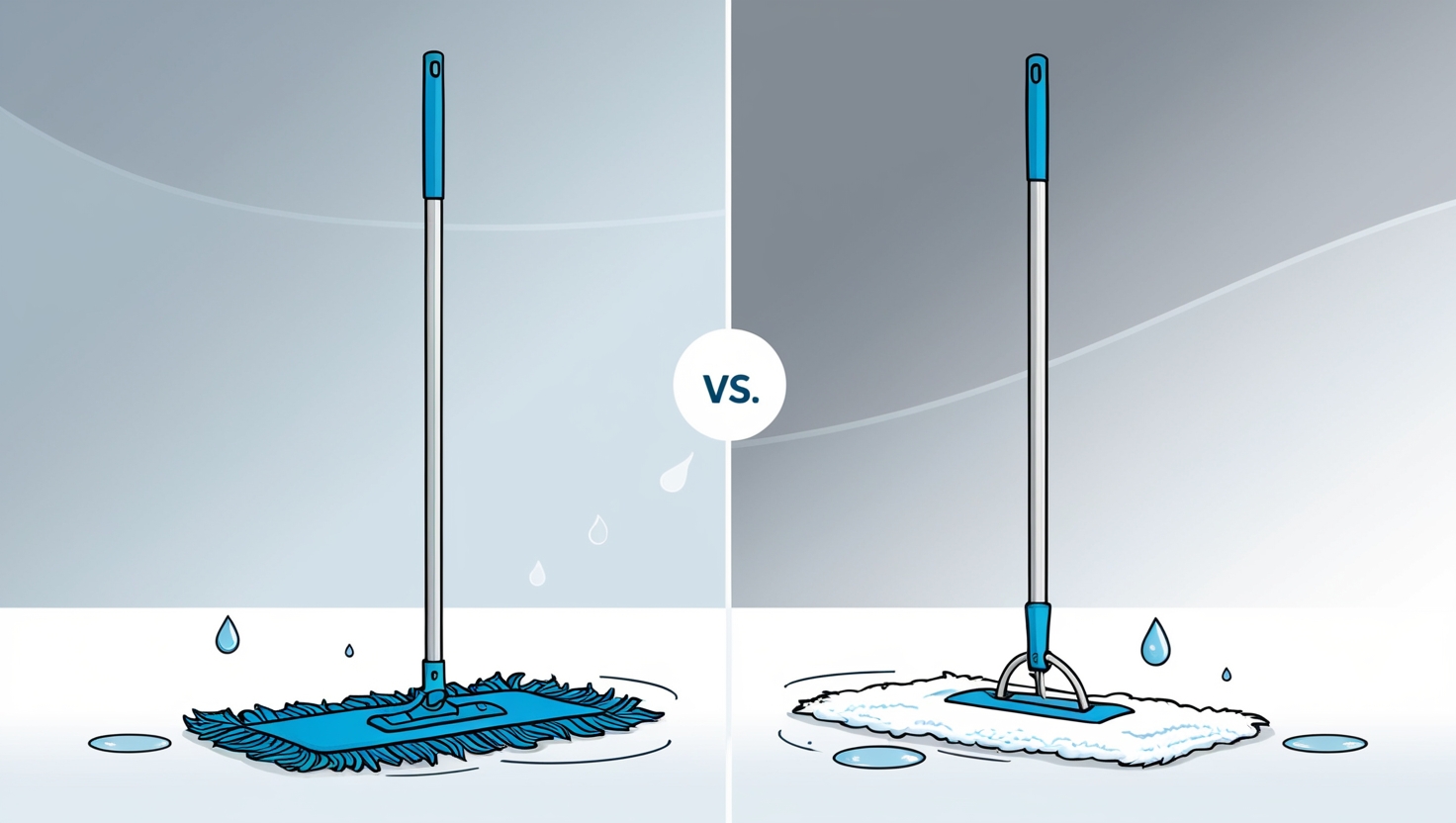Did you know a dirty mop has more than 2000 bacteria per square inch? Yes, that’s more than an average toilet seat!
It’s very important to keep your mophead as clean as you want the floors to be. This ensures not only better performance but also prevents the spread of germs and bacteria. While regular mopping is essential, maintaining the cleanliness of your mop itself is equally crucial.
For a comprehensive home cleaning strategy, consider a professional deep cleaning service. To improve your daily cleaning routine, mastering the proper mopping technique can make a significant difference. You might also want to explore the benefits of using a steam mop for a more efficient and sanitizing clean.
In this post, we’ll guide you through the specific method to keep your mophead in top condition, ensuring it remains an effective tool for maintaining a germ-free home.

What’s the Best Way to Clean a Dirty Mop?
There are countless types of mopheads and while each one is cleaned a little differently, there is one standard (and the best) method to clean them all.
Required Tools & Materials
- A pair of gloves
- Bucket of warm water
- Mild detergent
- Disinfectant
- Scrub brush
Step 1: Prepare Cleaning Tools
First of all, put on gloves to protect your hands from dirt and cleaning agents. Then, fill the bucket with warm water and add a small amount of mild detergent or mop cleaner. You’re ready to start cleaning the mop!
Step 2: Rinse the Dirty Mop
Now, remove the mophead (if it’s detachable) and rinse it thoroughly under running water to remove loose dirt and debris. Submerge it in the bucket with soapy water and let it soak for a few minutes to loosen any remaining dirt. Leave it soaked for at least 5 minutes.
Step 3: Scrub the Stains
Take the mophead out of the water and gently scrub the mop head with a scrub brush to remove stubborn dirt and stains. Pay special attention to heavily soiled areas. After scrubbing, rinse the mop head thoroughly under running water to remove all soap and loosened dirt.

Step 4: Disinfect the Mophead
Mix a disinfectant solution in a clean bucket (e.g., 1 cup of bleach in 1 gallon of water or a 1:1 vinegar and water solution). Next, submerge the mop head in the disinfectant solution and let it soak for at least 10 minutes to kill germs and bacteria.
After that, rinse it thoroughly under running water to remove all traces of the disinfectant.
Step 5: Dry It Thoroughly
Gently squeeze out excess water from the mop head without wringing it too hard to avoid damage. Lay it flat on old towels or rags to absorb excess moisture, then hang it on a clothesline or mop holder to air dry completely.
How to Clean a Spin Mop Head?
Now that we know the general method, let’s discuss the specifics of cleaning different types of mopheads!
For the spin mophead, you need to first check whether it is detachable. If yes, then remove the head according to the manufacturer’s instructions. Many spin mop heads are also machine washable.
So, check the label to ensure it’s safe to machine wash. Use a gentle cycle with mild detergent and avoid bleach. If not machine washable, soak the mop head in a bucket with warm water and mild detergent. Scrub gently, rinse thoroughly, and disinfect if needed.
Lastly, don’t forget to airdry the mophead completely before reattaching it to avoid mold growth.
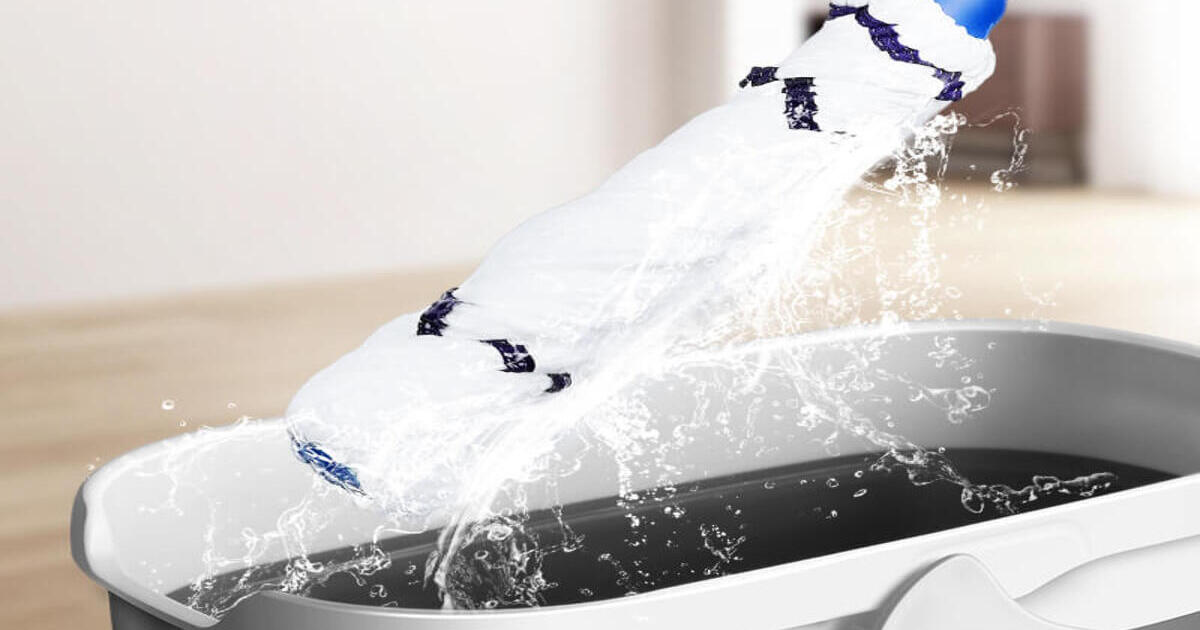
How to Clean a Dust Mop?
A dust mop is a cleaning tool designed to remove dust, dirt, and debris from floors and surfaces without using water. It typically features a wide, flat head covered with microfiber or cotton material that attracts and holds dust.
To clean it, take the dust mop outside first and shake it vigorously to remove loose dirt and debris. You can also use a vacuum cleaner to remove the finest dust particles from the mop head.
If washable, soak the dust mop head in warm, soapy water. Rinse thoroughly and air dry. Some dust mop heads can be machine-washed; check the care label. If necessary, soak in a disinfectant solution and rinse well.
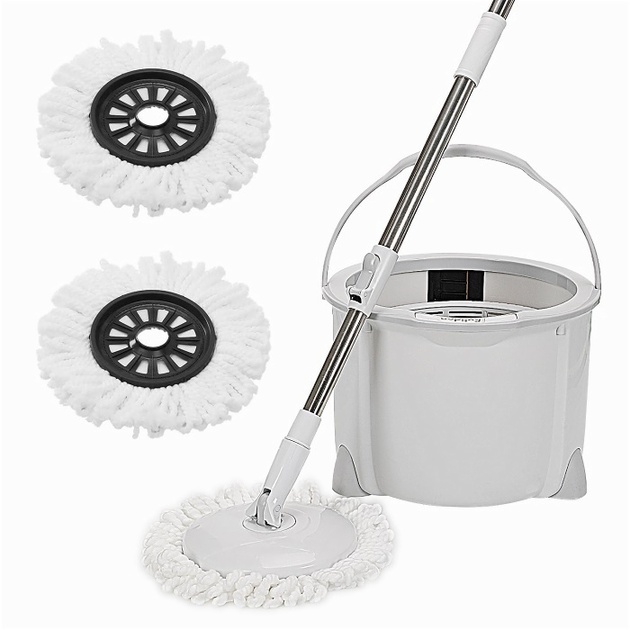
How to Clean Steam Mop Pads?
As the name suggests, steam mop pads are attachments for steam mops that are designed to clean and sanitize floors using hot steam. They are made from absorbent materials like microfiber, which helps effectively lift and trap dirt and grime.
To clean it, you need to remove the detachable steam mop pad and give it an initial rinse to get rid of the stuck dirt. This will make it clean enough to wash in the machine. Since most steam mop pads are machine washable, just put the rinsed pad into the machine.
Make sure you use a mild detergent and wash on a gentle cycle. Avoid fabric softeners as they can affect the pad’s absorbency. Air-dry the pad completely before reattaching it to the steam mop.
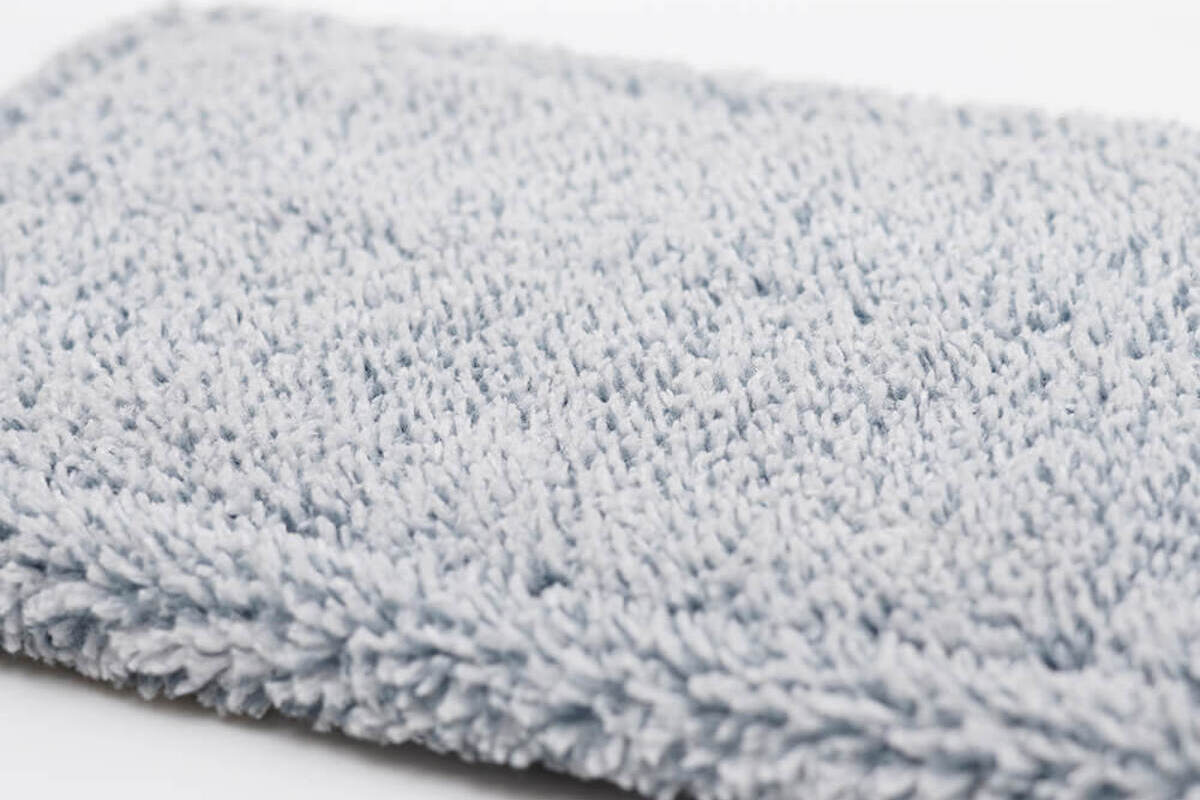
How to Clean an Electric Mop?
To keep your electric mop in good working condition, regular cleaning is essential. Start by turning off and unplugging the mop to ensure safety. If your mop head is detachable, carefully remove it. For reusable pads, rinse them under running water to eliminate any loose dirt and debris. Afterward, wash the pads in warm, soapy water, making sure to rinse thoroughly to remove all soap residue. Allow them to air dry completely before reattaching. If you’re using disposable pads, simply discard them after each use and replace them with new ones.
Next, use a damp cloth to gently wipe down the body of the mop, removing any dirt or residue that may have accumulated. Many modern electric mops are equipped with an automatic cleaning function, which can significantly reduce the effort required for maintenance. If your mop has this feature, activate it according to the manufacturer’s instructions.
By following these steps, you’ll keep your electric mop clean and functioning well. Regular maintenance not only preserves the mop’s cleaning performance but also extends its lifespan.
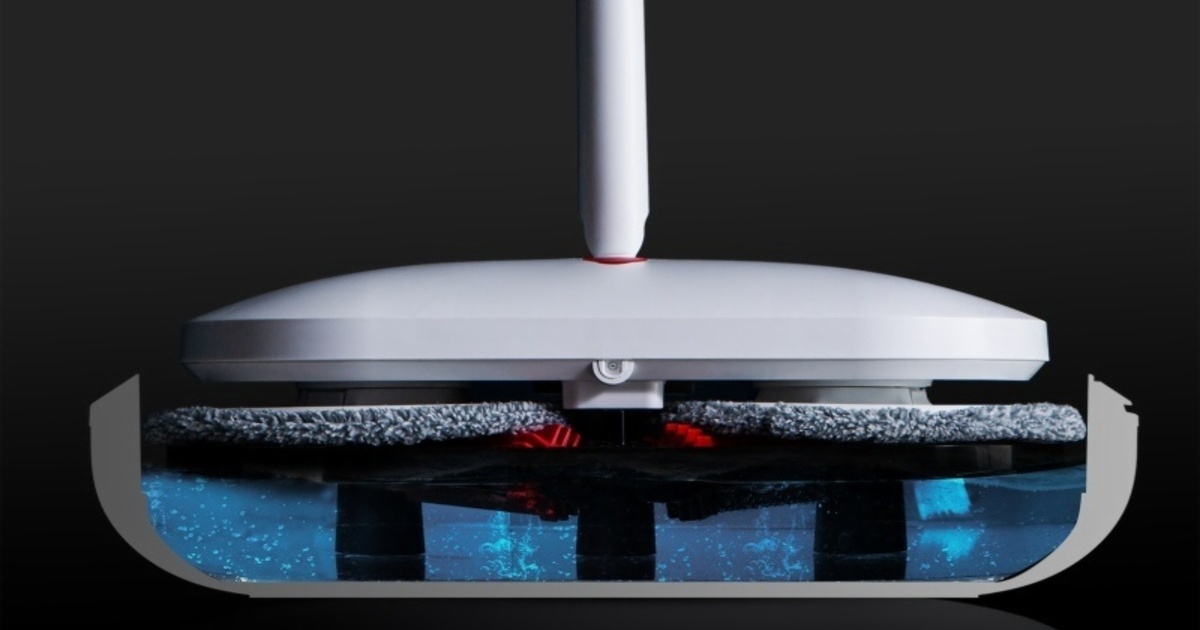
How to Clean a Spray Mop?
Most spray mops have refillable spray tanks, if it’s been a while since the last time you used the spray mop, then you should empty the liquid in the tank and rinse it with clean water.
If you prefer to give your home space a bit pleasant aroma, you can also add some essential oil to the water tank. The next step is to remove the mop head or pad and rinse the mop head under running water to remove loose dirt. Wash in warm, soapy water and rinse thoroughly.
If the mop pad is machine washable, use a gentle cycle with mild detergent. Soak in a disinfectant solution if needed and rinse well. Allow the mop head or pad to air dry completely before reattaching.
Can You Wash a Mophead in the Washing Machine?
Yes, you can wash mopheads in the washing machine – if they are machine washable. Some mopheads are too fragile and soft to be washed in the machine. So, make sure you check the manufacturer’s care instructions before choosing this method.
Washing a mophead in the washing machine is relatively convenient and efficient, especially if you’re dealing with a mophead that sees frequent or heavy use. he machine can thoroughly clean the mophead with minimal effort on your part.
Plus, the spinning action of the washing machine helps to remove dirt, grime, and bacteria more effectively than hand washing might. The consistent agitation ensures that all parts of the mophead are cleaned evenly.
However, machine washing can be harsher on the fibers of the mophead, which can potentially lead to quicker wear and tear. This is especially if the cycle is too rough or if hot water is being used. Handwashing is a more suitable option in this case.
Pro Tips to Maintain a Mop for Long-Term Use
A mophead can last years if maintained properly. Here’s how to do that:
- Rinse Thoroughly After Each Use: Always rinse your mophead with clean water immediately after mopping. This removes dirt, cleaning solution, and debris that could cause the fibers to break down or harbor bacteria.
- Dry Completely: After rinsing, allow the mophead to air dry completely before storing it. Hang it in a well-ventilated area to prevent mold and mildew growth, which can deteriorate the mophead and cause unpleasant odors.
- Rotate Mopheads: If possible, keep more than one mophead on hand and rotate them between uses. This allows each mophead to dry fully and reduces wear and tear, which extends its lifespan.
- Use the Right Cleaning Solutions: Avoid using harsh chemicals that can weaken the fibers of your mophead. Instead, opt for mild detergents or cleaning solutions that are appropriate for the material of the mophead.
Lastly, remember that even with proper care, mopheads will eventually wear out. Keep an eye on the condition of your mophead, and replace it when the fibers start to fray or it no longer cleans effectively.
FAQs
How often should I clean the mop head?
Ideally, it’s best to clean the mop head after each use. Do not go into details but do give mophead a quick rinse.
How do you know if your mop is dirty?
While the mop will be visually dirty, a simple test is water. Put the mophead in a bucket of water and check if dirt comes out.
How many times you can reuse a mop head?
It really depends on the type of mophead and how well you have maintained it. However, the standard range is 500 times.



